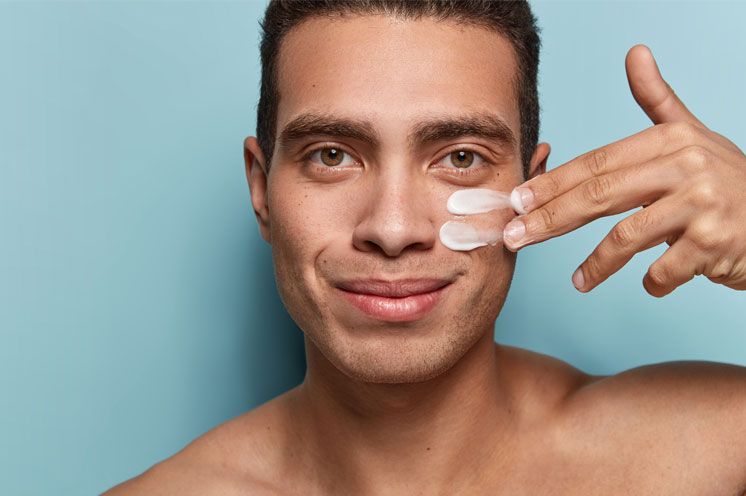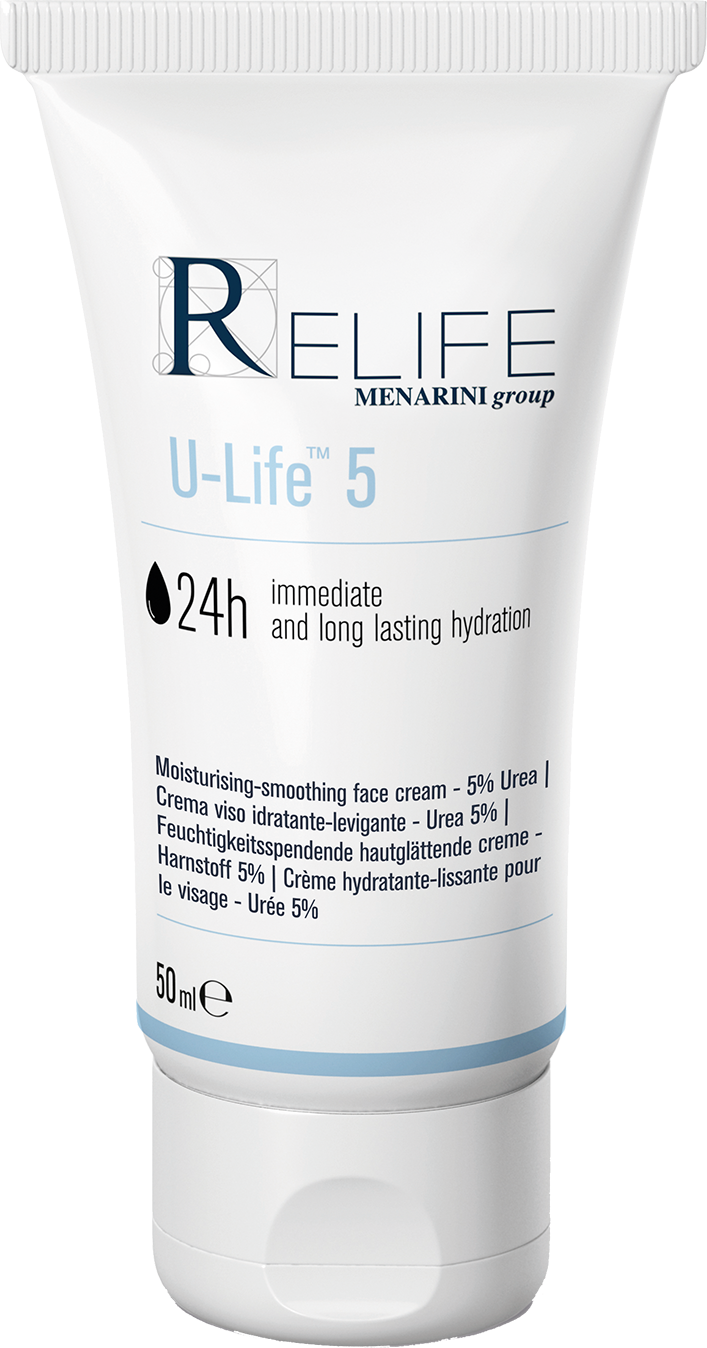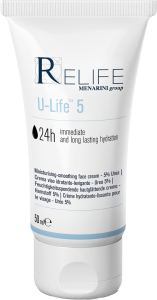Wonder worker
How does urea help to hydrate and heal our skin? We asked the expert.
How does urea help to hydrate and heal our skin? We asked the expert.
Wonder worker
How does urea help to hydrate and heal our skin? We asked the expert.

Keratolytic agents, like urea, lactic acid or salicylic acid, help to soften the outer layer of the skin.
Modern skincare ingredients can be difficult to pronounce, let alone comprehend. Urea, however, may be a more familiar term: it is a natural substance that has been used to hydrate and heal our skin for decades. U-Life is a new urea-based range from RELIFE Ireland and Dr Majella Lane, Associate Professor in Pharmaceutics at the University of London, explains how this hero ingredient can help skin conditions like psoriasis.
What is urea?
People will be familiar with urea in urine but it’s also present in our skin. It's a molecule that is formed when proteins are broken down. We knew that there were compounds like urea in our skin more than 60 years ago and it is obtained from many natural sources such as food or plants – it’s an organic substance. As a component of skin products, it has been around perhaps even longer because it’s good at holding water, and the benefits of applying it to the skin have been known for many years.

U-Life 5
A moisturising and smoothing face cream that offers immediate and long-lasting hydration
Why do we need it?
We all have Natural Moisturising Factor – a group of components, including urea, that are naturally present in the skin that keep it hydrated and moisturised. When you shower, that tight feeling afterwards is because you have washed out your own Natural Moisturising Factor and we try to supplement it using moisturisers and other products that add water back into the skin.
How does it work?
Water is very good at helping us slough off or exfoliate dry skin: urea has that same action. There are two ways urea can work: at low concentrations and at high concentrations, and depending on the amount in your formulation, you get different effects along that spectrum.
If I wanted to make a moisturiser, I would include water and a comparatively low amount of urea. The urea will bind to the water in my formulation and when the product is applied, the water will stay on the skin, and in the skin, for longer in contrast to a product that doesn’t have urea.
When we apply high concentrations of urea, we say that it is keratolytic: breaking down keratin, a protein in the skin. There is still the beneficial effect of adding moisture but at the higher concentration levels, you are trying to remove skin.
How can it help?
Urea has a repair and maintenance function and encourages healthy skin turnover. Urea-based products at higher concentrations can be targeted to the areas of the body where the skin is toughened, thickened and uncomfortable, such as the very dry hard skin around the heel area. Urea is very effective in concentrations of 30 to 50 per cent in dealing with those areas.
With psoriasis, you are dealing with a condition where layers of skin build up in an abnormal fashion, resulting in areas of thick, rough skin. Applying urea to those scales or thickened skin is very beneficial because it helps the cells to fall off naturally, it simply encourages the exfoliation or removal of cells from thickened skin in psoriasis.
We should look at urea as a skin food: it’s already part of us and you are supplementing your body with what it already has, as our ability to make urea declines as we grow older.
What should I be mindful of?
Take note of the concentration of urea in the product you're using. As you move beyond 10 per cent, you move into effects similar to facial peels. Urea breaks down the links between cells so we lose excess skin cells on the surface of the face, but it doesn't have the same pH as the acids that are common in facial peels, so it’s not as harsh. However, it will have the same effects and will transiently thin the skin so you have to be mindful of the concentration of urea you are applying. Just because 10 per cent is good doesn't necessarily mean 20 per cent is even better, because it depends on the particular skin problem you are trying to target. A product that deals with thick skin on the feet is not going to be suitable for the thinner skin on the face. When testing a product in makeup halls and pharmacies we normally do so on our forearm, not on our face. The skin on our arm or hand is not the same as the skin on the face, so think about a product and how you want to use it. If it is for your face, it’s better to test it there directly.
It’s useful to think of your skin as a brick wall: the bricks are dead cells packed with protein and in between are lipids or fat. Why do we get dry skin or atopic eczema? It’s because of defects or deficiencies in the brick wall. A good moisturiser supplements the barrier function of the brick wall, it helps to maintain the defense of the brick wall. Urea fills in the gaps.
Keratolytic agents, like urea, lactic acid or salicylic acid, help to soften the outer layer of the skin.

U-Life 5
A moisturising and smoothing face cream that offers immediate and long-lasting hydration